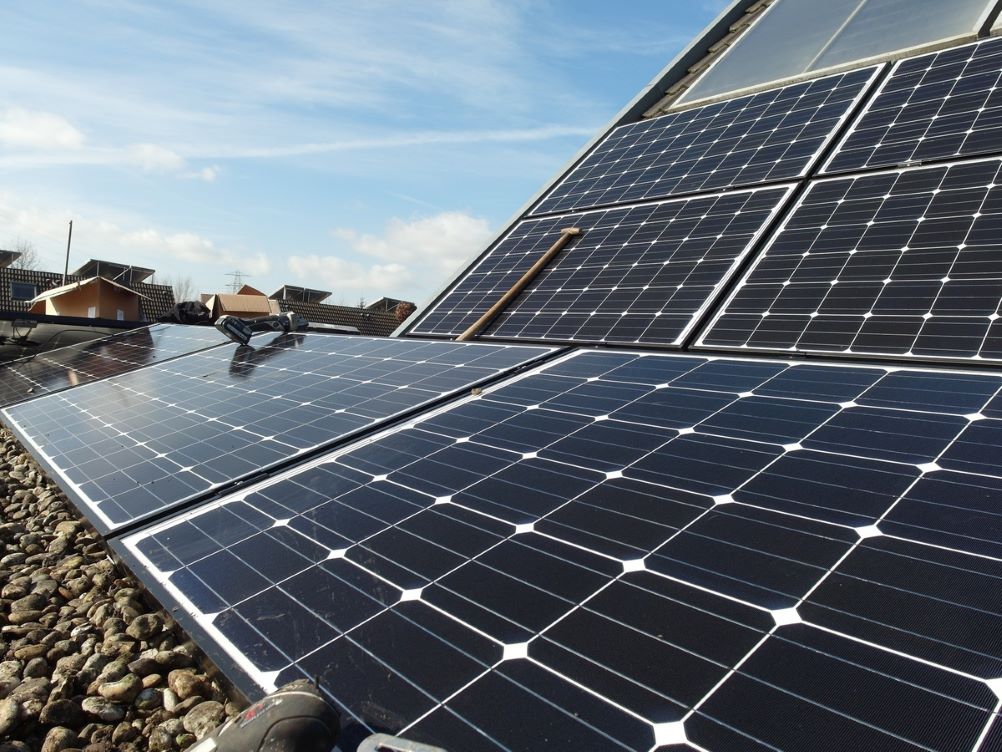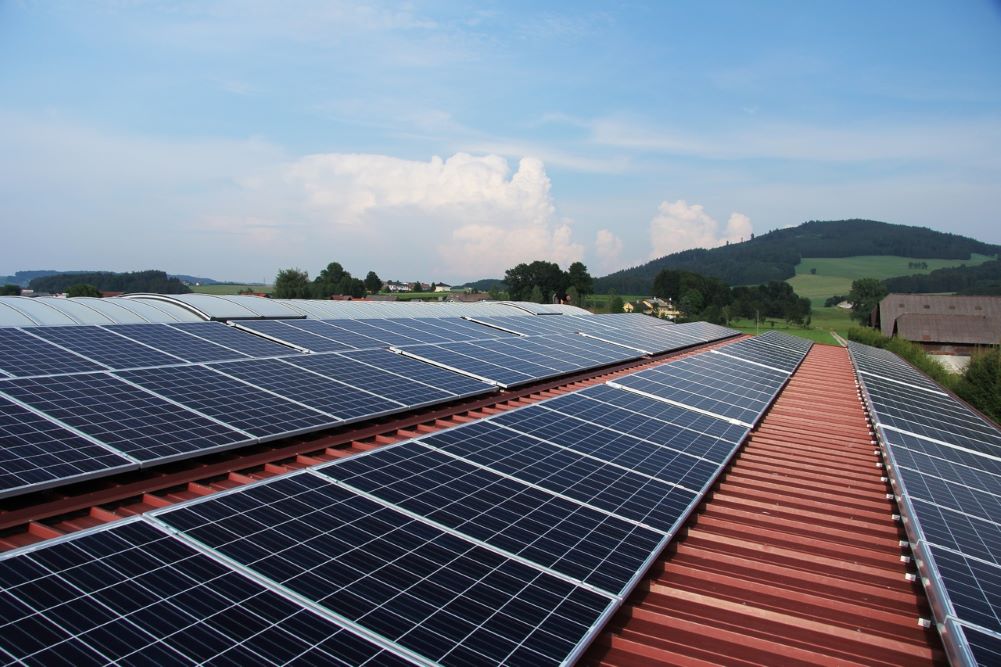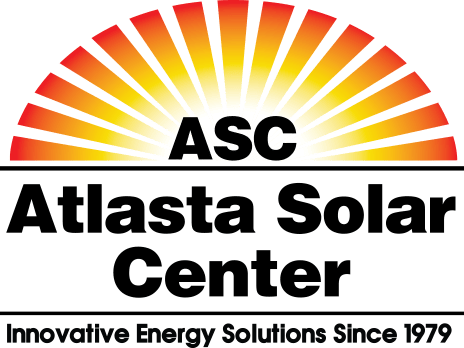What are solar panels made of? This is a great question, especially if you’re interested in solar power. Knowing the parts of a solar panel will help you understand how they work. At Atlasta Solar Center, we’re all about educating folks the ins and outs of solar panels. Let’s discover what solar panels are made of
What Is A Solar Panel?
Let’s first look at what a solar panel is. Technically known as a photovoltaic (PV) panel, a solar panel absorbs, collects, and converts sunlight into an electric current (energy.) This process is known as the photovoltaic effect. Basically, this is when electrons within the solar panel’s solar cells are knocked loose, creating electricity.
The Importance of Silicon
A PV panel contains solar cells, or photovoltaic cells, which absorb sunlight. For solar cells to absorb sunlight, solar cells must contain a semiconductor. A semiconductor is a material that conducts electricity only when energy is provided (such as sunlight.) The main semiconductor in solar panels (and most electronics) is silicon, in the form of thin silicon wafers. Silicon is a dark gray crystal or metalloid. In fact, silicon is the semiconductor for 95% of PV panels.
PV panels are available in three cell structures:
Monocrystalline
Monocrystalline panels are composed of a single large silicon crystal. These are the most efficient in generating energy and are usually the most expensive.
Polycrystalline
These panels are made of several smaller silicon crystals melted together. These panels produce about 1% less power than monocrystalline panels but are reliable and the most common type of solar panel.
Amorphous
Amorphous panels are composed of non-crystalline amorphous silicon. These panels are inexpensive to manufacture, the easiest to install, and are usually the cheapest option. The downside is that amorphous panels have the lowest power yield of the three solar panel types. With their all black, sleek design, these panels are considered the most attractive solar panel.

The Necessity of Metal
Metal is required to conduct the energy generated by silicon. Many arrays with silicon cells use silver wiring and metal casings to channel energy (in the form of electrons) to the inverter (which converts power to DC to AC power.) Silver is an excellent conductor but is expensive. As a result, magnesium-treated steel is often used.
Anti-Reflective Coating and a Glass Layer
Pure silicon is so naturally shiny that it can reflect up to 35% of sunlight–rather ironic, given the purpose of a solar system. To prevent losing energy, an anti-reflective coating (typically titanium dioxide and silicon oxide) is applied to the silicon wafers.
To protect delicate solar cells, a thin layer of glass covers the solar panel. Beneath the glass, there is a casing for insulation, which helps dissipate heat and humidity within the panel. Insulation for solar panels is important. A panel that overheats leads to decreased energy output. Solar panels must be correctly manufactured, so they capture enough light without overheating. A back sheet beneath the silicon wafers also helps regulate temperatures.
Metal Frame
A metal frame (usually aluminum) encases the panel and is used to mount the panel.
Other Solar Components
A solar panel is just one component of a solar system. Other parts of a solar system include:
Solar battery
A solar battery stores the energy generated by PV panels. Solar batteries are available in three types: lead, lithium, and saltwater. Lead batteries are the most affordable option but require more maintenance. Lithium batteries are longer lasting and store more energy. As a result, lithium batteries are far pricier. Saltwater batteries are more environmentally friendly as they don’t contain heavy metals. Instead, they contain saltwater electrolytes and are easier to recycle. However, saltwater batteries are a new, largely untested technology.
Charge controller
The charge controller controls and protects the storage system from overcharging. You can think of the charge controller as the “brain” of the solar setup, as this component regulates the charge and current to the batteries, from the energy supplied from the panels.
Solar inverter
This component converts solar energy from DC to AC power. Without the inverter, your home can’t use the power generated by your solar system.

Solar Panel Maintenance FAQs
Here are some frequently asked questions about maintaining solar panels.
How long do solar panels last?
PV panels last an average of 25 years with proper care and maintenance. Factors such as weather and location also affect panel lifespan.
Do I need to maintain or clean my solar panels?
Yes, you should clean your solar panels. Why? Dirty panels can decrease a solar system’s energy output by as much as 20%. Fortunately, solar panels are relatively easy to maintain. A simple rule of thumb: clean your array whenever the panels are dirty. Tilted panels allow rain and snow to clean the panels. If you live in a dry, dusty area or near a construction site, regularly clear away any debris.
How do you clean solar panels?
First, power off your solar system, to avoid electrocution. Review your solar system’s manufacturer’s manual first, for proper cleaning instructions. Clean on a cooler day to prevent cracking the panels. Gently remove debris with a soft-bristled brush, then rinse the panels with water. If using a hose, avoid using high pressure. Then use a non-abrasive cleaning solution to clean the panels. Do not use bleach, detergent, or car wash soap as these will damage the panels. For a chemical-free cleaning solution, dilute vinegar in water. Finally, rinse again and gently squeegee the panels dry.
Helpful tip: Review your energy bills before and after cleaning the panels.
Can you recycle solar panels?
Yes. The aluminum frame and glass panel are relatively easy to recycle. However, recycling the silicon within the cells is more complex. The silicon must be etched out and then smelted into reusable slabs.
Atlasta Solar Center: Here For Your Solar Needs
No matter which type of solar setup you need, Atlasta Solar Center is here to help! We offer residential, commercial, and off-grid solar energy. Harness the clean energy of the Colorado sun, contact us at 970-248-0057.
